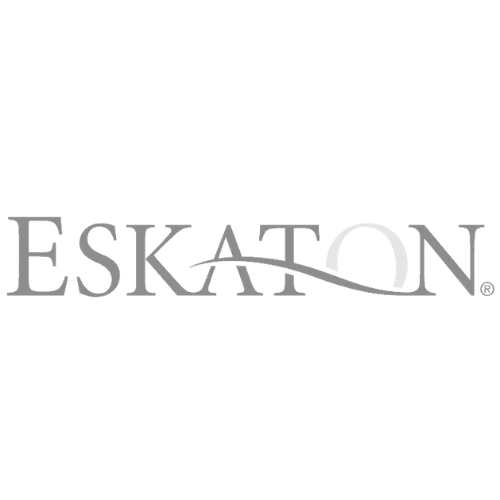Resources
Below I've listed some free resources to that have helped me and other business owners succeed.
Blog

Are You Building a Business or Just a Busier Job?
You’re told to hustle, to grind, to build complex funnels and chase the next big marketing trend. You’ve been sold a dream of explosive growth, but for most entrepreneurs, the reality is a nightmare of overwhelm, burnout, and a business that feels more like a prison than a vehicle for freedom. What if the secret to scaling isn’t found in adding more complexity, but in subtracting it? What if the path to exponential growth lies not in revolutionary leaps, but in small, almost invisible, strategic tweaks?
This isn’t another article promising a silver bullet. This is a reality check. We’re going to dismantle the myths that are holding your business hostage and give you a practical, step-by-step framework to achieve real, sustainable growth. We’ll explore why the AI revolution you’ve been promised is largely a mirage for small businesses and how, according to marketing guru Russell Brunson, tiny adjustments to your existing strategy can unlock bigger wins than any massive overhaul. Forget everything you think you know about scaling. It’s time to get strategic.
The Great Lie of Complexity: Why Your Growth Strategy is Backwards
For years, the prevailing wisdom in the entrepreneurial world has been that growth requires more: more marketing channels, more complex sales funnels, more features, more staff. But this philosophy of addition often leads to a business that is bloated, inefficient, and impossible to manage. The truth is, for most small and medium-sized businesses, complexity is the enemy of growth.
As Russell Brunson, the co-founder of ClickFunnels, recently pointed out, “It’s not always a new funnel or a brand-new traffic source. Most of the time, the big win comes from a little tweak”. This insight is a radical departure from the “more is better” mentality. It suggests that instead of building a whole new engine, you might just need to tighten a few loose bolts. This approach is not about being lazy; it’s about being surgical. It’s about identifying the few key levers in your business that, with minimal effort, can produce the greatest results.
This principle is echoed in the real-world application of another much-hyped growth lever: Artificial Intelligence. While the headlines scream about an AI revolution, a recent Forbes analysis reveals a much more sober reality. Most small businesses are not building custom AI-powered systems to automate their entire operations. Instead, they are finding small, practical applications for AI that save them time on the fringes of their business. As one business owner noted, AI is “helping, but it’s not like our business is completely changed”.
This pragmatic approach to both marketing and technology points to a powerful new paradigm for business growth: strategic simplicity. It’s about focusing your energy on the things that truly matter and ruthlessly eliminating everything else.
The 30-Day Strategic Simplicity Challenge: Your Actionable Blueprint for Growth
This isn’t about theory; it’s about action. Over the next 30 days, we challenge you to adopt a mindset of strategic simplicity. Here’s your step-by-step guide:
Week 1: The Proof Project - Build Your Foundation of Credibility
The single most valuable asset in your business is not your product or your service; it’s proof. Before you can scale, you need to prove that you can get results. This week, your sole focus is on creating and documenting that proof.
Action Steps:
Identify Your “One Thing”: What is the single most valuable result you can deliver for a client? Get crystal clear on this.
Find Your “Proof Partners”: Identify 3-5 ideal clients who would benefit from your “one thing.” Offer to work with them at a significantly reduced rate, or even for free, in exchange for a detailed case study and testimonial.
Document Everything: As you work with your proof partners, meticulously document the process and the results. This isn’t just about getting a glowing review; it’s about understanding the journey your clients take to achieve success. This will become the raw material for all your future marketing.
Week 2: The Funnel Tweak - Optimize for Psychological Wins
Now that you have proof, it’s time to optimize your sales process. Instead of building a new funnel from scratch, you’re going to make small, strategic tweaks to your existing one. These tweaks are designed to leverage basic human psychology to increase conversions.
Action Steps:
Implement Price Anchoring: In your marketing materials, introduce a high-ticket “anchor” price before you reveal your actual price. For example, you might mention a “$10,000 comprehensive consultation” before offering your “$997 implementation package.” This makes your offer seem significantly more affordable.
Master the 3-Day Challenge Flow: If you use challenges in your marketing, structure them for maximum impact. Day 1 is for teaching and upselling to a VIP experience. Day 2 is your main pitch. Day 3 is for addressing logical objections and making an emotional connection.
Extend Your Closing Window: Don’t close your cart immediately after a promotion. Leave it open for the weekend and use urgency in your follow-up emails. According to Brunson, a third of sales often come in the final hours [1].
Week 3: The AI Audit - Reclaim Your Time at the Fringes
Forget the AI hype. This week, you’re going to be a pragmatist. Your goal is to find small, repetitive tasks that you can automate with simple, off-the-shelf AI tools. The goal is not to revolutionize your business, but to reclaim a few precious hours each week.
Action Steps:
Identify Your “Time Sinks”: What are the small, repetitive tasks that eat up your time every day? This could be anything from responding to customer inquiries to creating social media content.
Find Your “Fringe” AI Tools: Research simple AI tools that can help with these tasks. For example:
Use a tool like Zapier to connect your Google Reviews to ChatGPT and automatically draft responses.
Use a video creation tool like Invideo to turn your written training materials into engaging videos.
Use ChatGPT to draft proposals, social media posts, or email newsletters.
Implement and Measure: Choose one or two of these tools and implement them in your business. Track the time you save. The goal is to free up your mental energy for more strategic work.
Week 4: The Systemization Sprint - Build Your Freedom Machine
Growth isn’t just about getting more customers; it’s about building a business that can run without you. This week, you’re going to take the lessons from the past three weeks and start building systems to automate and delegate.
Action Steps:
Map Your Core Processes: Identify the key processes in your business, from lead generation to client fulfillment.
Create Your “Proof Playbook”: Take the documentation from your “Proof Project” and turn it into a step-by-step guide for delivering results. This is the foundation of your training materials.
Automate and Delegate: Identify which steps in your core processes can be automated with technology (like the AI tools you identified in Week 3) and which can be delegated to a team member. Start small, but be relentless in your pursuit of automation.
Your Business is a Reflection of Your Choices
The path to a thriving, scalable business is not paved with complexity and hustle. It’s paved with strategic choices and disciplined execution. By focusing on proof over perfection, strategic tweaks over massive overhauls, and pragmatic automation over AI hype, you can build a business that not only grows but also gives you the freedom you’ve been searching for.
This 30-day challenge is just the beginning. The principles of strategic simplicity can be applied to every area of your business, from your marketing and sales to your operations and finance. The question is, are you ready to stop being busy and start being strategic?
Your next step is simple: Choose one action from the 30-day challenge and implement it this week. Don’t overthink it. Just start. The future of your business depends on it.
hire US on a monthly retainer
CarrierConsultingCo. will work with your team to help you reach your annual and quarterly goals. Currently only 3 remaining spots available. Fees start at $500/hr
Trusted by leaders Like You








We exist to help leaders lead their business, home and communities.
Carrier Consulting Co
SERVICES
2024 Mastermind
One-on-One Coaching
Group Coaching
